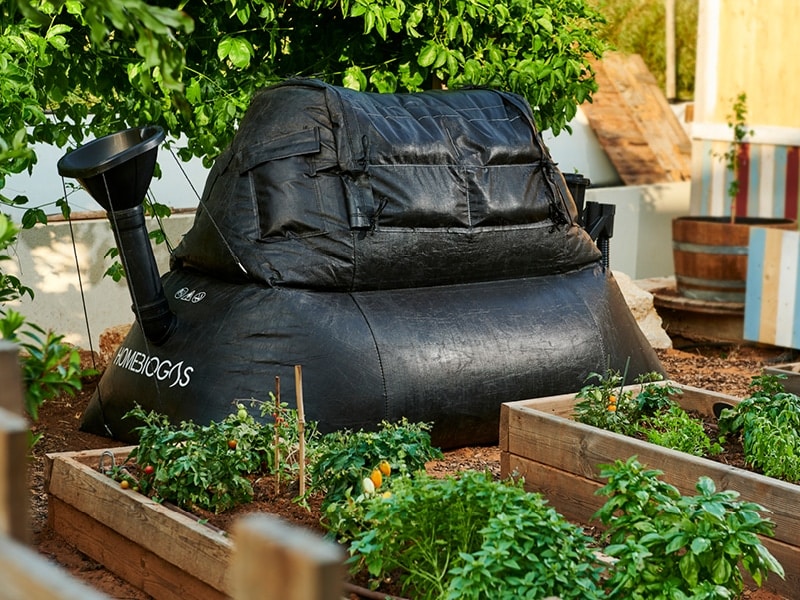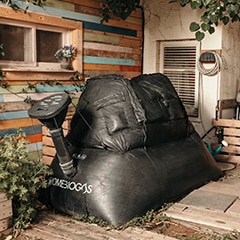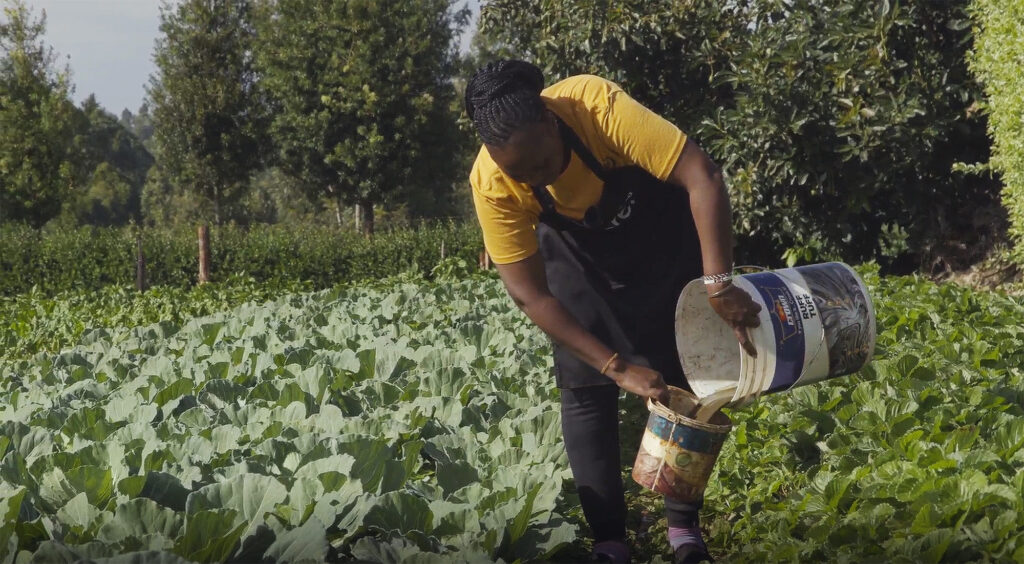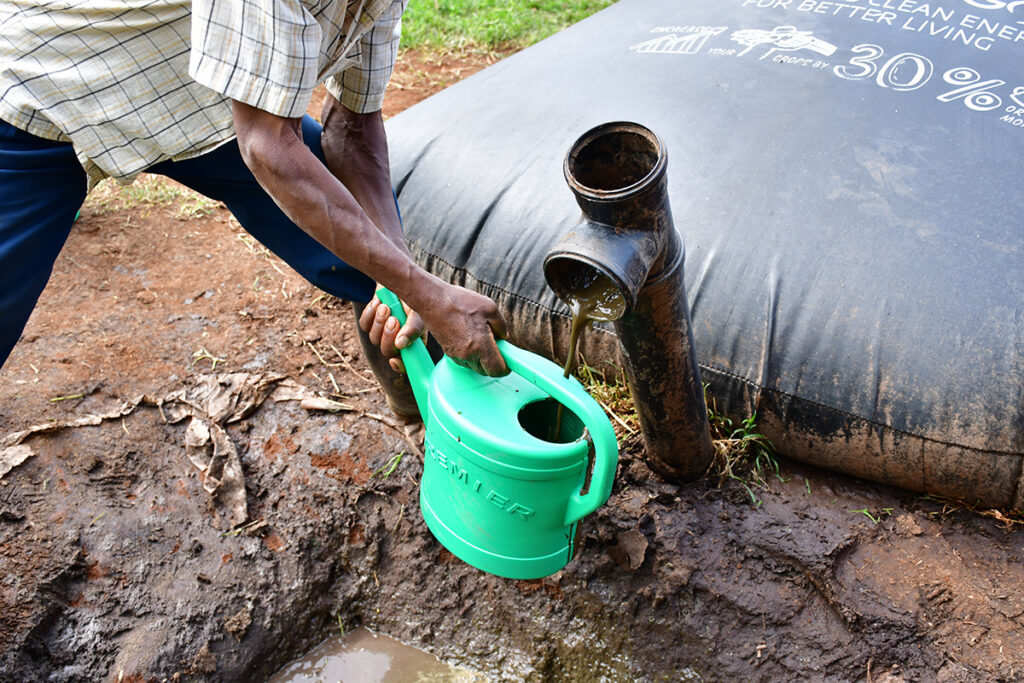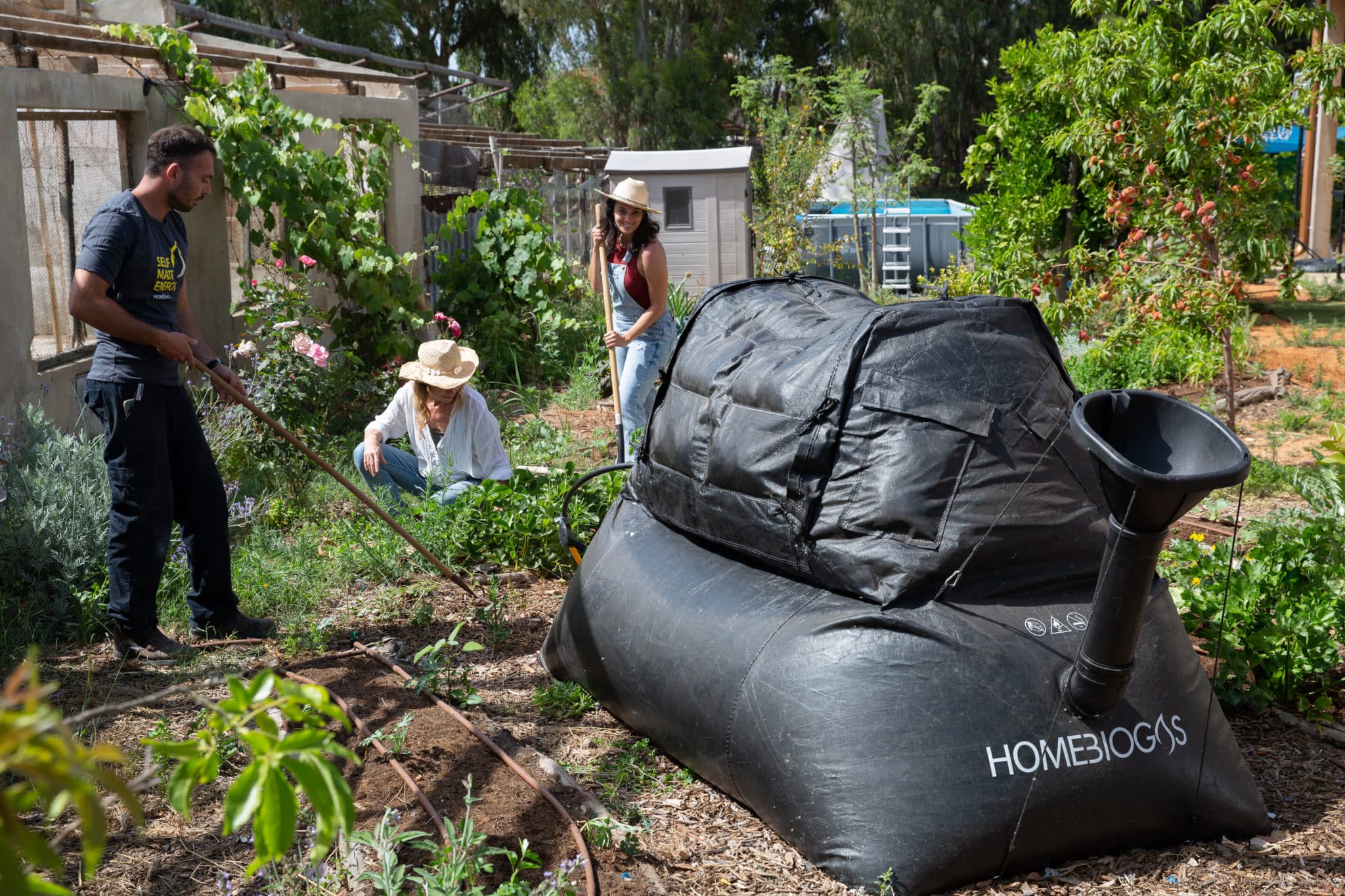
What is a biodigester septic tank?
A biodigester septic tank is a long-term waste and sewerage management system that allows us to recycle water and produce biogas using environmentally friendly procedures. The system consists of a sealed chamber where bacteria break down organic (usually from waste from wastewater) in an oxygen-free environment.
The processes inside the bio septic tank produce biogas, useable water, and occasionally bio-fertilizer. This nutrient-rich, organic sludge supports plant growth and enriches and balances the soil.
How does a biodigester septic tank actually work?
The concept behind the biodigester septic tank is based on a natural process called anaerobic digestion. Bacteria in the tank break down organic waste matter into a series of chemical elements through a chain of chemical reactions until all you get is methane (commonly known as biogas), carbon dioxide, and water.
In environments that lack oxygen, the process occurs naturally in nature—in some soils and lake or oceanic basin sediments. A biodigester septic tank is an artificial environment that makes this natural process possible anywhere on your property. This way, you can sustainably manage waste and produce carbon-neutral biogas with a minimum impact on the environment.
For the system to work, it must observe some general rules:
- The container should be sealed so no water or gas can enter or leave the chamber uncontrolled. This way, you protect the soil and secure the oxygen-free environment necessary to start the anaerobic digestion process.
- The tank should have a solid structure that guarantees its stability in the long run.
- The biodigester must have insulation to ensure a consistent temperature inside the chamber throughout the year and facilitate the fermentation process.
- All materials used should be resistant to corrosion for health and safety reasons.
Depending on the manufacturer and the purpose of the biodigester septic tank, it can come with two or more chambers. This way, solid waste gets separated from the blackwater (liquid waste) to create the right balance inside this sealed space necessary for the bacteria to start feeding on the organic matter and produce biogas.
If you opt for a system that uses aerobic digestion for waste management, an electric pump is needed to ensure the bacteria inside the tank receive enough oxygen to thrive.
Types of biodigester septic tanks
Biodigester septic tanks come in multiple shapes and sizes to match various needs and enable the fermentation process in multiple climate areas.
The most common materials used to build biodigester septic tanks are:
- Steel
- Concrete
- Masonry
- Bitumen
- Bitumen Coat with Aluminum Foil
- Synthetic Resin Paint
- Paraffin
- Plastic
- Wood (in rare circumstances)
It’s important to remember that one material isn’t better or worse than others. Different climates, where on your property you need to build the biodigester, installation costs, or even the size of the system can influence the materials you use.
Some manufacturers also provide alternatives with multiple layers made of a mix of materials when they must meet specific needs. This way, they can guarantee a top-quality product, usually with a longer product lifespan.
What is the difference between a biodigester and a regular septic tank?
In some ways, biodigester septic and ordinary septic tanks serve the same purpose: tackle waste management problems. The distinction is that a biodigester septic tank uses anaerobic digestion to produce biogas, which is something that a standard septic tank isn’t equipped for.
The bacteria inside a biodigester is different and thrives in an oxygen-free environment. Its presence enables you to treat waste and obtain carbon-neutral fuel, fertilizer, and water that can be further used for agriculture. On the other hand, a regular septic tank will only store waste, and the present bacteria can produce fertilizer, but the list of advantages stops here.
Moreover, while the biodigester septic tank requires minimum maintenance, a regular septic tank must be emptied regularly to work.
What are the advantages and disadvantages of biodigester septic tanks?
The benefits are multiple:
- If you capture the methane, you can use it as biogas for cooking or heating.
- You produce quality fertilizer for your lawn and garden.
- Since it’s a premade system, it needs little to no maintenance.
- You get to treat black water and recycle it for agriculture activities.
- You save money and make the most out of all resources in the long run.
Disadvantages of a biodigester:
- Some systems are underground solutions, so installation is complex and expensive.
- Due diligence is required to pick a product that observes all local environmental regulations, which might narrow your options.
- Most waste management systems are not practical in all contexts, so a biodigester isn’t a one-size-fits-all solution.
Do you need to empty and maintain a biodigester septic tank?
It depends on the product you install. Some systems require emptying and regular cleaning, while others have these functions built-in, so you don’t have to worry about maintenance.
You still need to find a way to manage the products resulting from the process—such as collecting and using the biogas and disposing of the biofertilizer.

How to install a biodigester septic tank?
After you have selected the right biodigester septic tank, you want to prepare the area where you’ll place it:
1. Identify the right place on your property for installing the biodigester—close enough to collect waste and wastewater and make it easy to send the biogas back to where it will be used for cooking.
2. Read carefully the documentation provided by the manufacturer to ensure everything is set up correctly.
3. Gather all the tools and construction materials necessary for the installation, as suggested by the manufacturer.
The actual procedure will differ depending on the product you choose. An underground solution, for example, necessitates additional preparation activities. Either way, it’s critical that you follow the assembly instructions to the letter and, if the manufacturer gives them, watch all of the videos that demonstrate how to install the biodigester.
You must assemble the biodigester, ensure that all pipes and connectors are securely sealed, and install all of the filters given by the manufacturer throughout the installation procedure. Please keep in mind that not all solutions on the market are fitted with a DIY installation method, and you may need to hire expert assistance to complete the task.
The HomeBiogas solution
The HomeBiogas biodigester is an environmentally-friendly solution that turns organic waste into renewable energy with an innovative, easy-to-install backyard system. It comes in various sizes, so you can choose the one that better suits your property’s needs.
The HomeBiogas systems are suitable for also recycling food scraps and even animal manure to provide you with clean cooking gas and rich fertilizer.
All HomeBiogas solutions are designed to help save the environment by reducing your carbon footprint and maintaining a self-sustainable life.
With various sizes available, the HomeBiogas biodigester is tailor-made for your property’s needs, making it the ultimate environmentally-friendly solution.
Join the eco-conscious movement and unlock the power of renewable energy with HomeBiogas today!
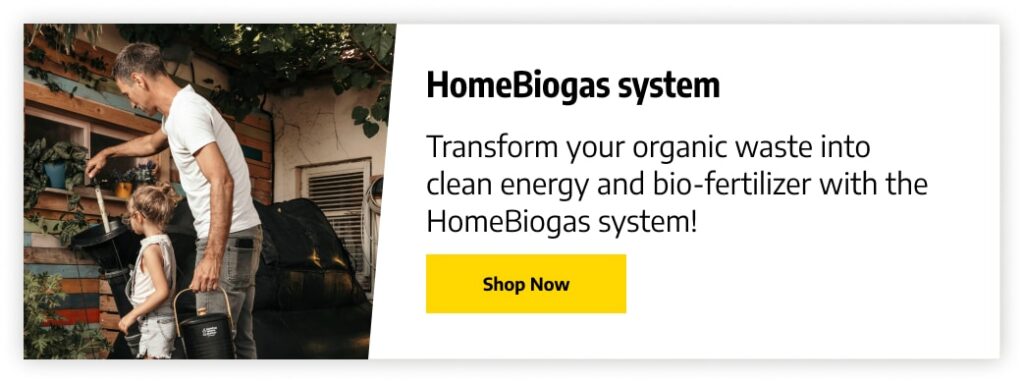
Future developments in wastewater management and treatment
Wastewater is 99.9% water that should be recycled for better use of resources. As authorities become more aware of the impact proper wastewater management has on the environment, we can expect a shift toward finding better solutions to make this process fast, cheap, and environmentally friendly.
Both anaerobic and aerobic technologies are popular solutions for the treatment of organic wastewater, with anaerobic technologies considered more effective as they consume less energy. Choosing the right solution should also consider the wastewater’s composition, geographical limitations, and other factors that can influence the natural processes during decomposition.
We can also expect this change to influence micro and macro systems. Individuals will opt for biodigester septic tanks to manage waste, while also large communities will try to make their current management processes more environmentally friendly using modern technology.
Conclusion
Biodigester septic tanks are a top choice for waste and wastewater management on your property. The challenge is to choose a system that better meets your needs and is a good fit with the reality of your home.
When you pick a biodigester, think of all the external factors that can influence its functionality, from climate to soil quality to the number of users that will benefit from it. This way, you install a system to help you live a self-sustainable life with a minimum impact on the environment.
